
We’ve developed the world’s first technology that can detect and identify microbes directly from samples such as whole blood, without culturing, in less than 30 minutes. We call it Biospectrix. This enables physicians to quickly treat patients with the highly targeted antimicrobial they really need.
Blood sample to diagnosis
Separating bacteria from whole blood samples
One of the primary challenges in identifying microbes is to separate them from blood cells. Chemical lysis provides one possible solution—but as it destroys red blood cells, it also damages bacterial cells, leaving them unavailable for further testing.
3i Diagnostics technology isolates bacteria from blood via pressure-driven, selective lysis that does not involve the use of chemicals. Our solution uses a four stage process to separate intact microbes directly from whole blood as well as other sample types.
Several diagnostic technologies currently on the market promise to deliver results in one to six hours. But that doesn't tell the whole story. What they really provide is one hour to result after blood culture is completed. The blood culturing process typically takes two to six days. Effective antibiotic stewardship and treating critically ill sepsis patients cannot wait for blood culture to be completed.
3i Diagnostics is different. Our technology lets clinicians identify the infection they are fighting in less than 30 minutes. There’s no need for blood culturing—but the sample will remain intact for any further testing you choose to perform.
Biospectrix
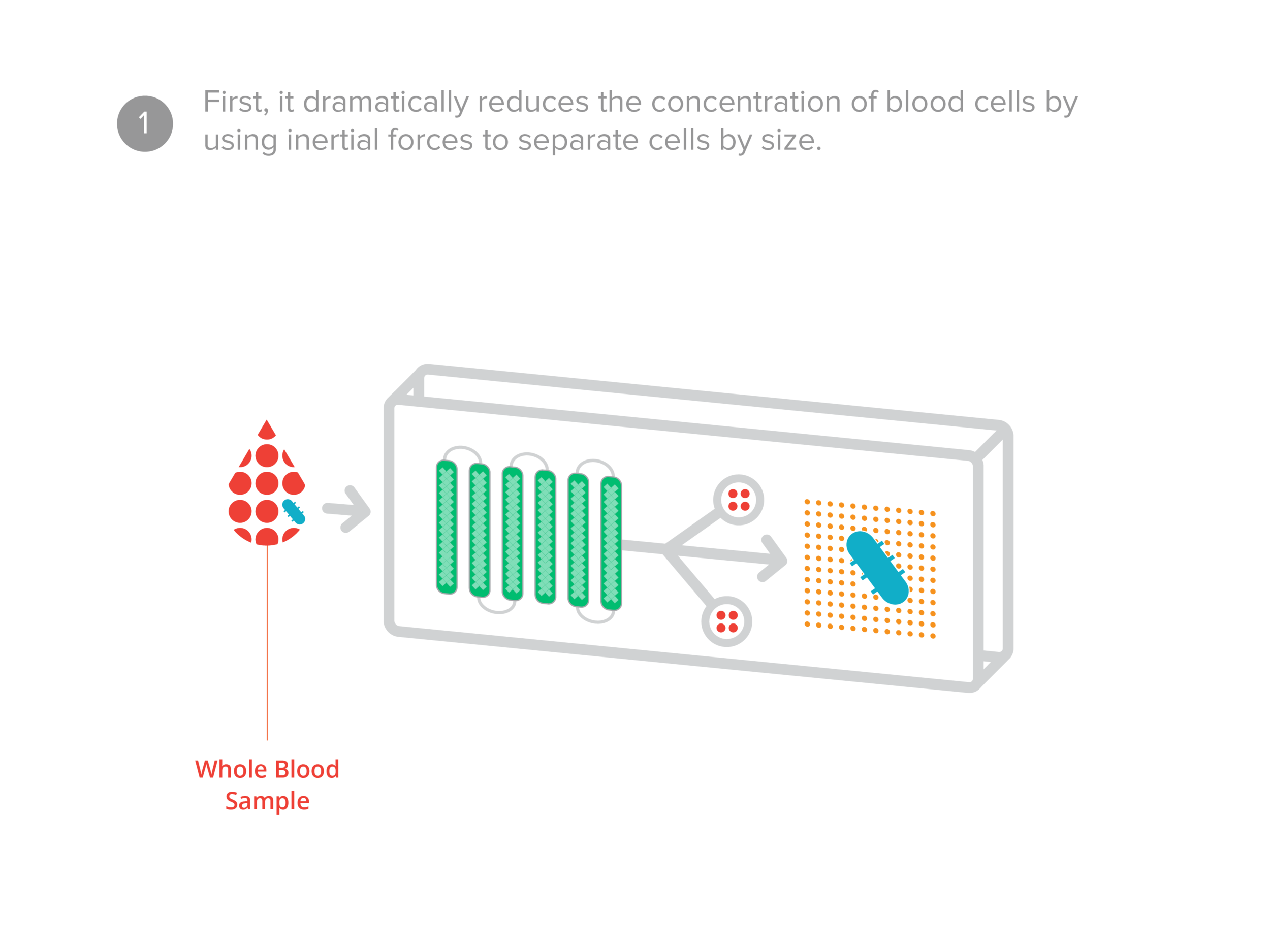
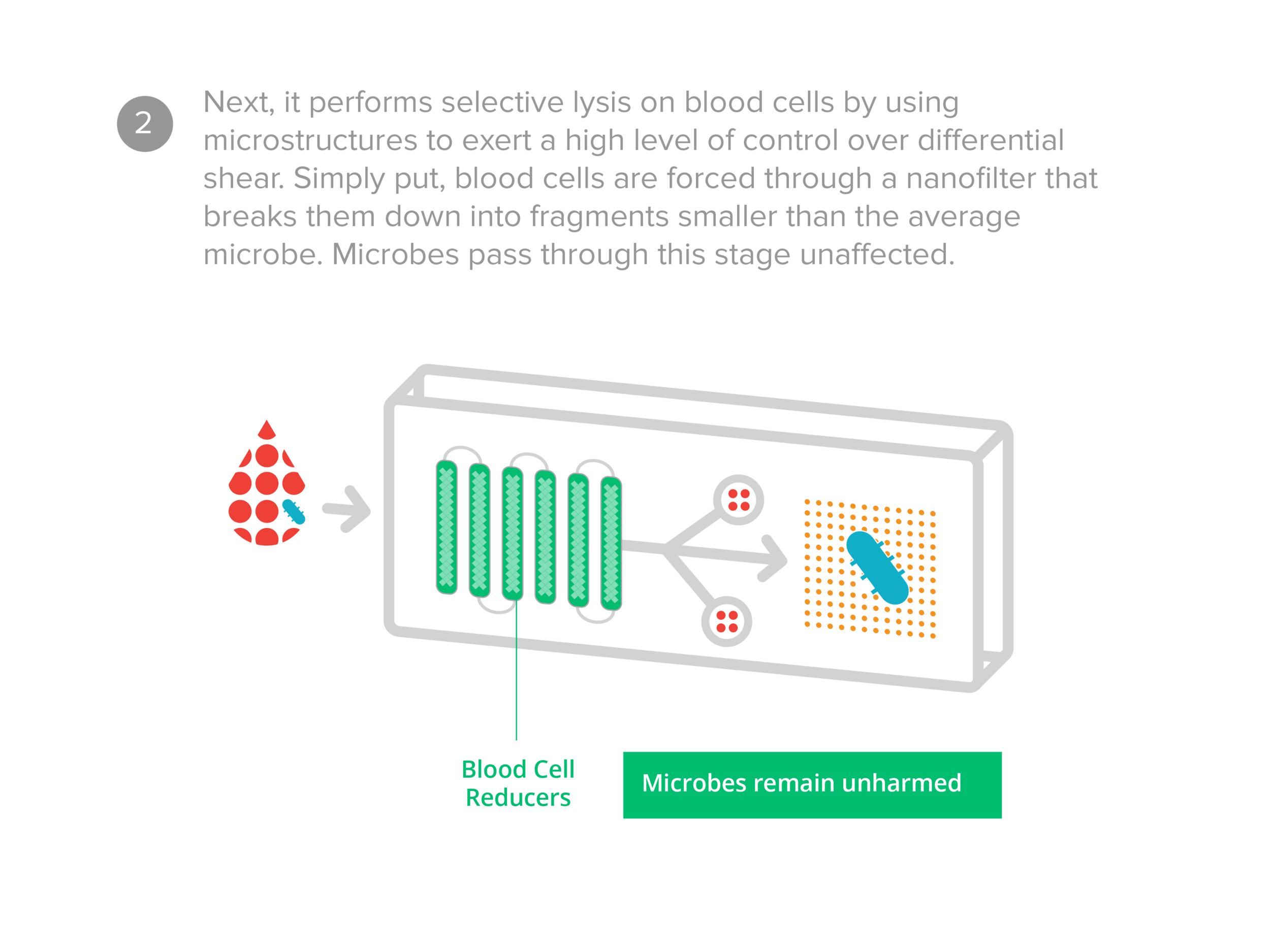
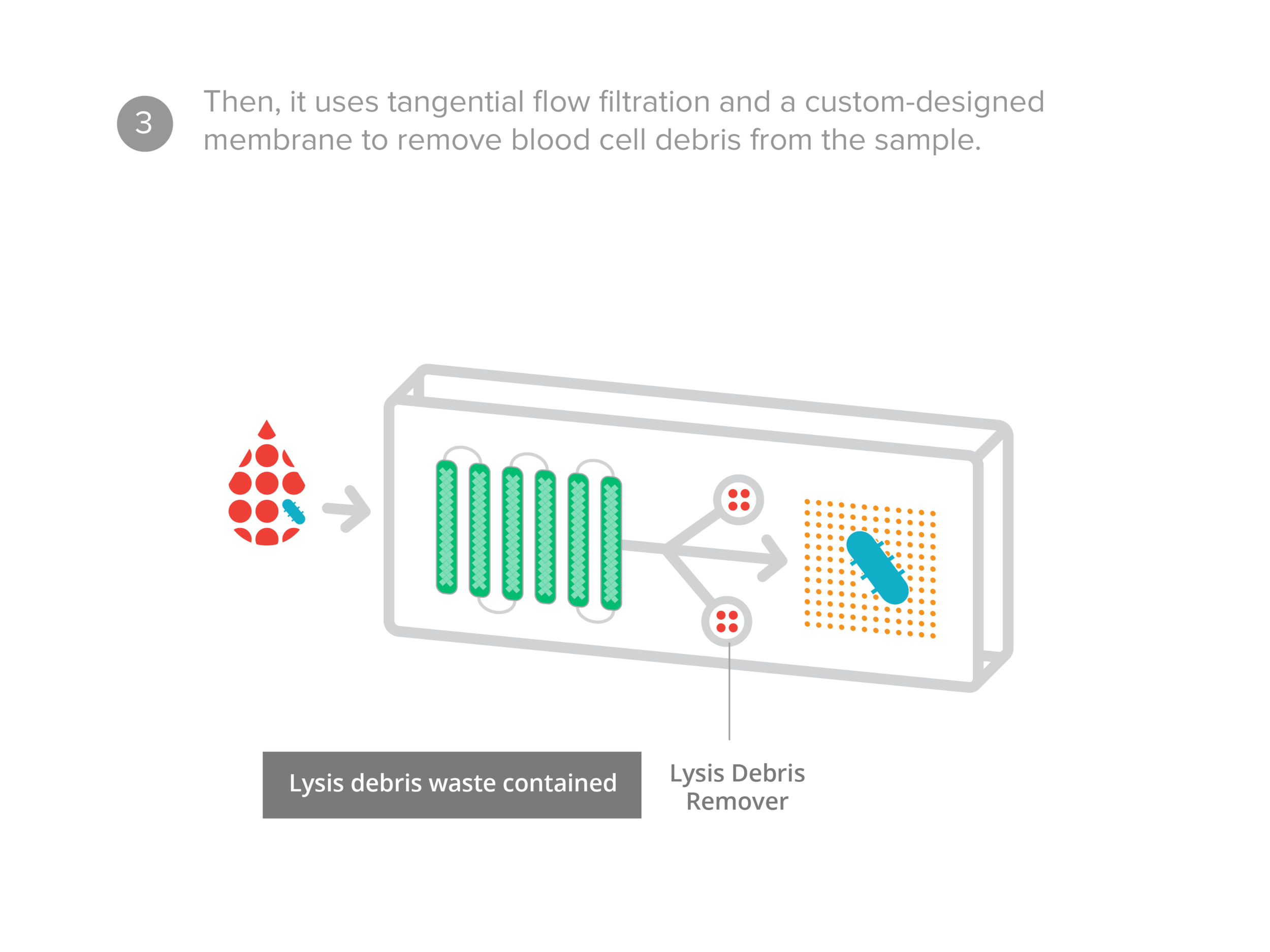
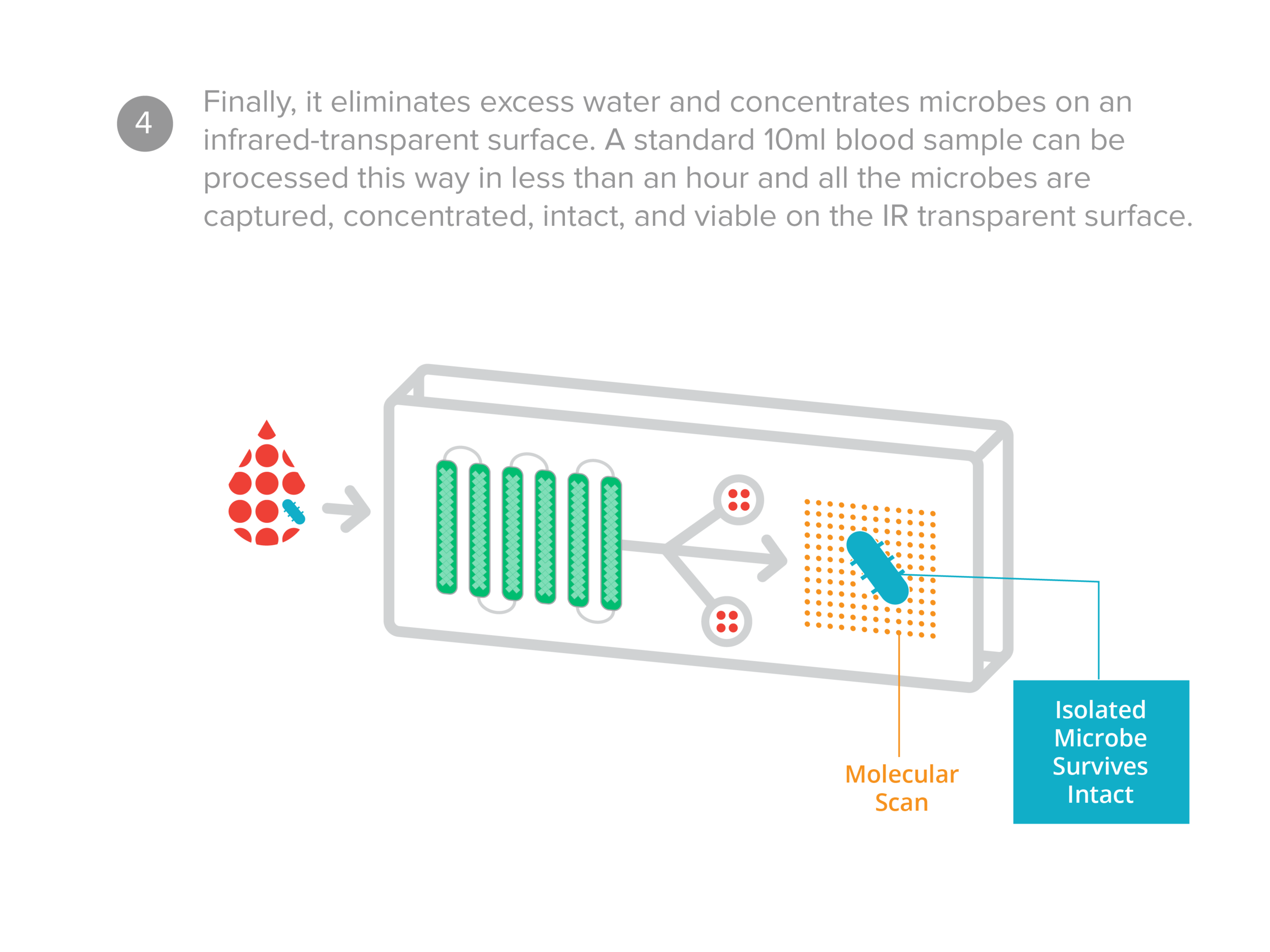
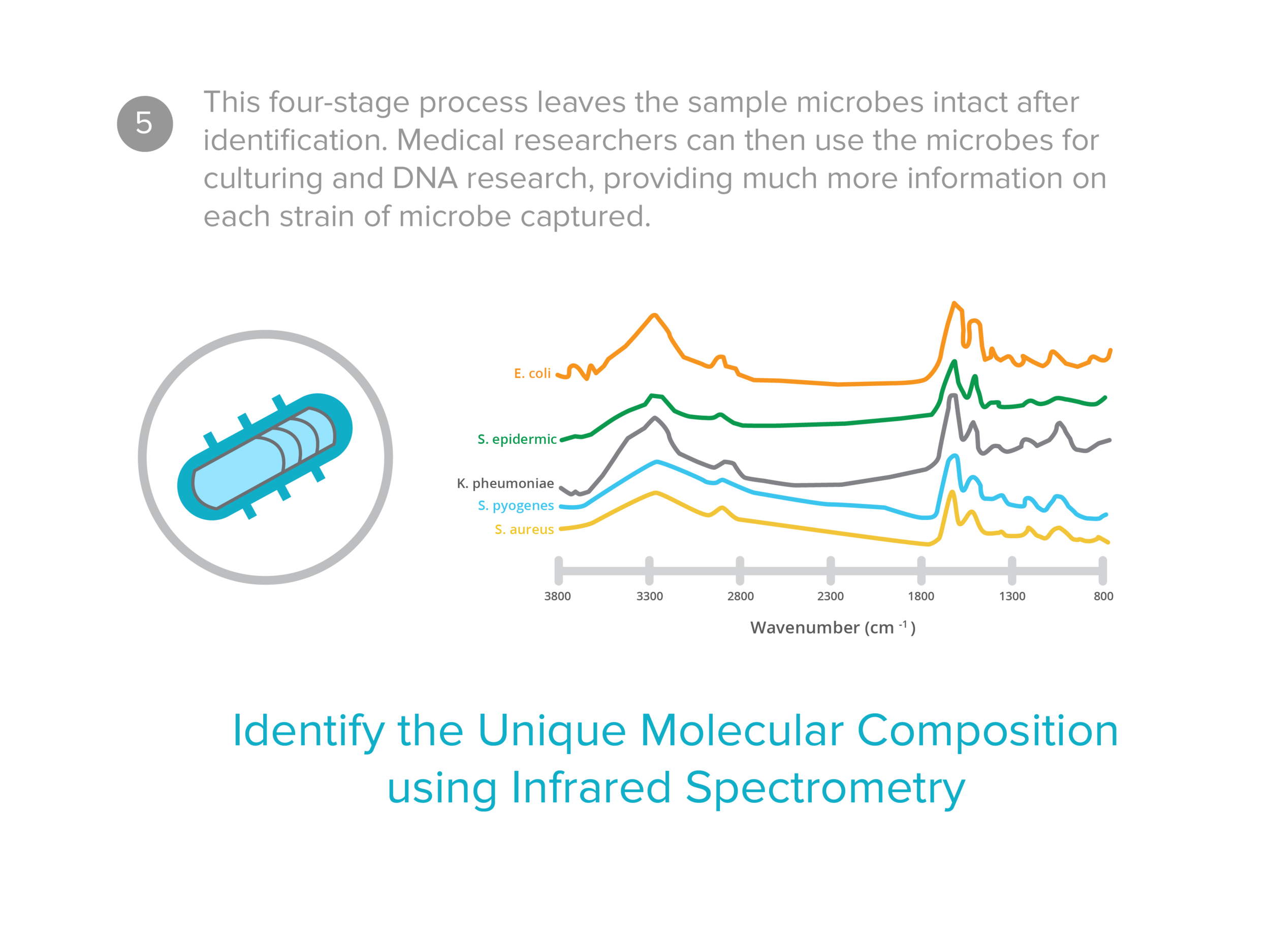
Biospectrix™ Universal Cartridge
Product Details
Isolating bacteria directly from blood present a unique set of problems for researchers. The Biospectrix Separation Cartridge allows you to do exactly that without antibodies, DNA, or other custom reagents.
Bacteria from blood are isolated utilizing our proprietary Selective Lysis Unit that breaks down blood cells but not bacteria and does not require any incubation or labeling.
The isolated bacteria can be recovered or lysed for subsequent analysis. In ≤ 40 minutes process up to 5mL of blood to recover any bacteria.
Now available for research use only. Contact us for more details
Isolated bacteria can be analyzed by multiple techniques
Features
a - Bacteria can be isolated without a priori knowledge of the bacteria.
A novel approach to infrared spectrometry
Science has known since 1991 that we could identify bacteria using infrared. It wasn’t until now that someone found a way to put this to clinical use—in a way that can slash healthcare costs and save millions of lives per year.
3i Diagnostics technology uses a novel infrared molecular profiling technology to accurately identify thousands of different kinds of microbial strains. The infrared can even help you distinguish between different strains of the same species, supporting even more precise diagnoses and treatment plans.
The near and distant future of medical diagnostics
With a single blood draw and using a simple workflow, our technology can identify a large number of microbial strains in less than 30 minutes. Best of all, it is portable, easy to operate, and cost-effective enough to be deployed in clinics across the developing world.
Our technology will have an immediate impact—but our engineering won’t stop there. We aim to enhance the technology so that it will be available in a hand-held unit that delivers results in less than 15 minutes. This would give physicians an even greater advantage in fighting the microbes that cause serious infections. We also plan to develop technology that allows clinicians to test sputum and swabs for harmful microbes.








